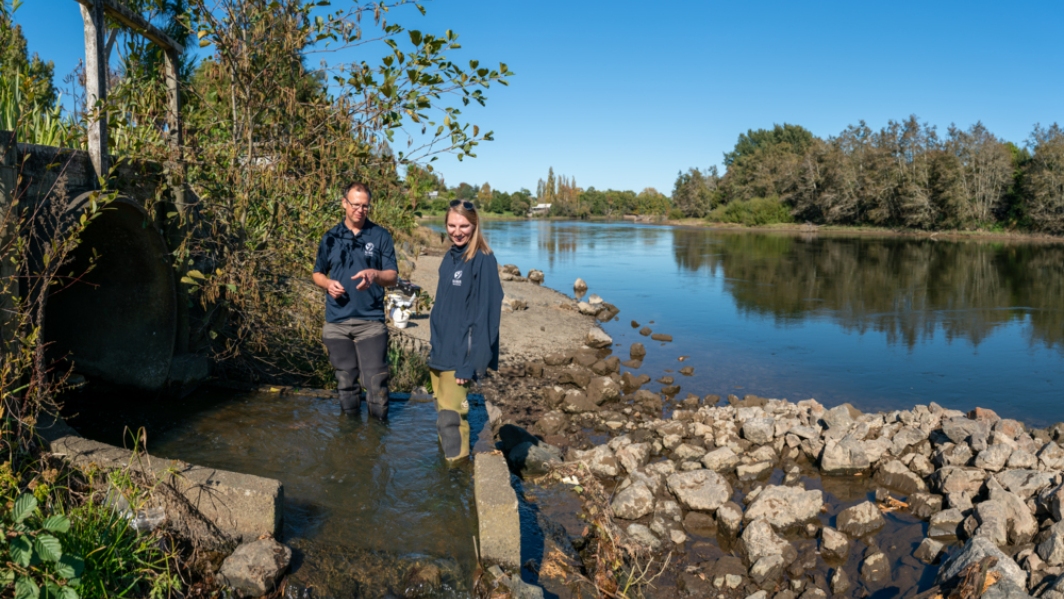-

NIWA scientists make surprise discovery
News article25 November 2013After two years of groundwork, NIWA scientists have finally unlocked the mystery of the elusive lamprey breeding grounds. -

Scientists on hunt for freshwater crayfish
News article20 November 2013NIWA scientists have secured funding for a project they hope will take them a step closer to discovering why the number of freshwater crayfish, or koura, in the Upper Waikato River has dramatically declined. -

Scientists helping to create safer communities
News article21 October 2013 -

Waitaki weed surveillance plan
Research ProjectNIWA and Meridian are developing a management strategy on LINZ crown owned lakes for pest aquatic plants – weeds, the alga Didymosphenia geminata (Didymo) and filamentous green algae (both native and introduced) - in the Waitaki Catchment. -

River Environment Classification
Research ProjectThe River Environment Classification (REC) is a database of catchment spatial attributes, summarised for New Zealand's river network. The attributes were compiled for the purposes of river classification, while the river network description has been used to underpin models. -

Modelling channel dynamics in braided rivers
Research ProjectNIWA are contributing to and testing the open source Delft3D model so that it can be used to simulate the response of braided rivers and their ecosystems to the changes in river flow associated with water use schemes, such as dams. -

Water - managing our most precious resource
Farms rely on, and affect, the rivers, streams and estuaries around them. We provide resource management, research and technology services to help you optimise your water use and minimise environmental impacts. -

Mapping our freshwater biodiversity
Research ProjectThe ability to properly manage our freshwater resources requires a solid understanding of the flora and fauna which live in and interact with them. -

Acoustic and radio telemetry
Radio and acoustic tracking of fish (or any animal) allows the movement and activity of animals to be recorded over the life of the transmitter (battery size dependent). -

Summer Series 4: Life in the (ex) stream - exploring New Zealand's fabulous freshwater fauna
News article15 January 2013Our freshwater fauna are wonderfully diverse and, according to NIWA Freshwater Ecologist Dr Richard Storey, there's nothing among them that we need to be afraid of.

